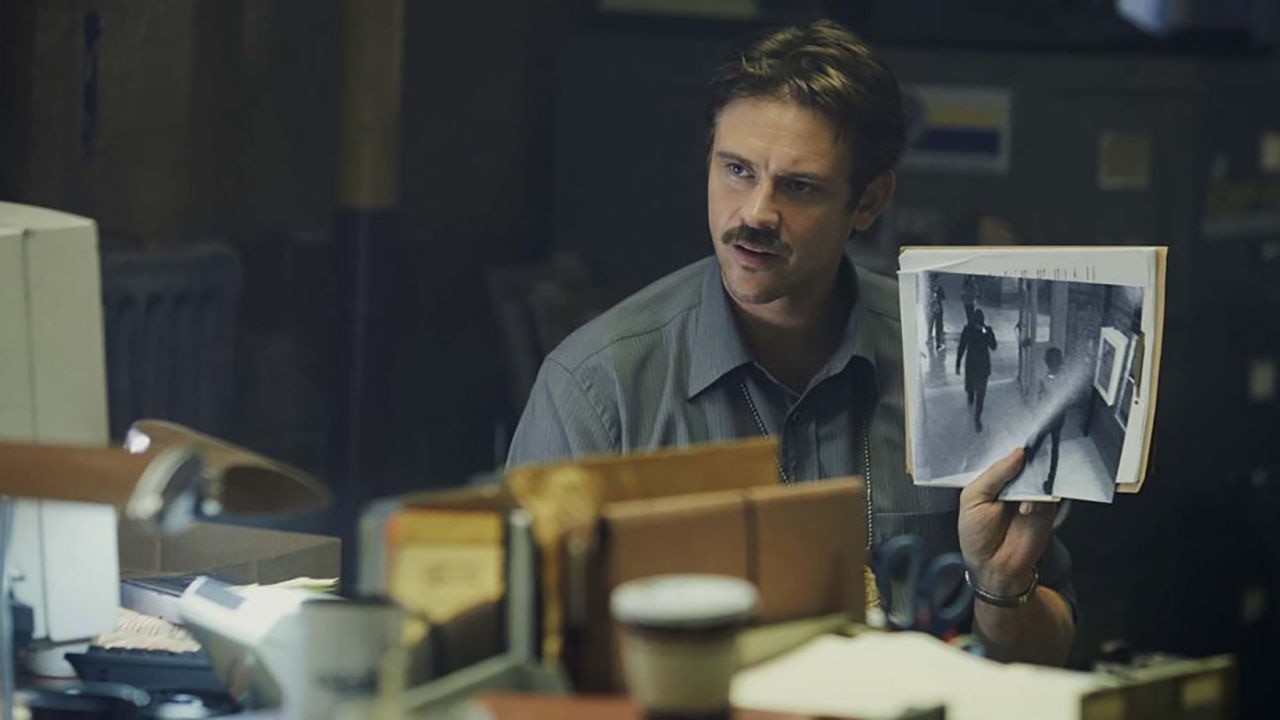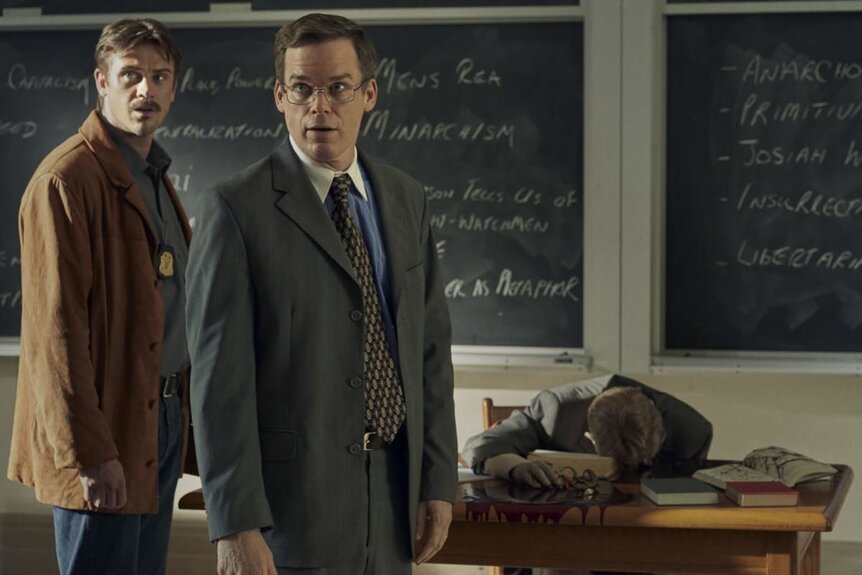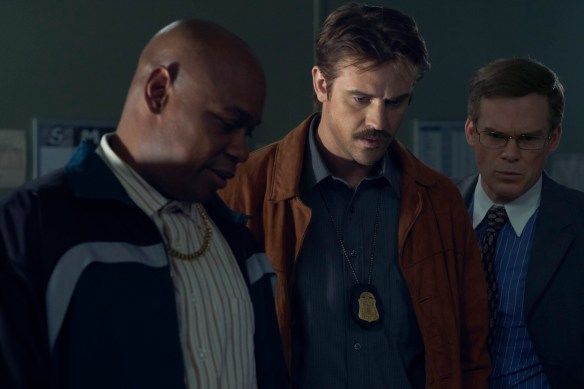Create a free profile to get unlimited access to exclusive videos, sweepstakes, and more!
How Netflix saved In The Shadow of the Moon, a new time-travel cop thriller

Making movies is hard. There are a million moving parts at every step of the process, a tangle of threads a director has to keep straight in order for the finished product to make any sense. When your film involves time travel, those complications are multiplied.
That's exactly what director Jim Mickle and his cast and crew had to tackle when bringing In the Shadow of the Moon to life. On the surface, the movie, which premiered at Fantastic Fest, is about a young and hungry policeman named Locke (Boyd Holbrook) on the trail of a serial killer in the late 1980s, but as the story unfolds it becomes quickly apparent that there's a heavy sci-fi element in play. Time travel, specifically.
There are two ways you can do a time-travel story. One way is the multiverse way. That's when you can change any and everything because you're really just branching your world off into an alternate world with each change. The other is a bit tougher. The time stream doesn't branch off and crazy changes can only happen in small, targeted ways because if you change something too big, then you might stop yourself from going back in the first place — think Back to the Future.
Mickle and his team decided to go for the latter option, which he called "the tree trunk path." That tied their hands a bit more, but doesn't come with some of the drawbacks with the multiverse approach.
"There's a bit of 'Well, your life might suck now, but there are a million other versions of you out there that are going on to have a good life' and now we're just following the one who didn't," the director tells SYFY WIRE. "It's a low-stakes version of the story."
But Mickle was quick to point out that while the sci-fi element of the story is important and a lot of thought was put into it all adding up in the end, the real make-it-or-break-it aspect of the movie rests with its main character.
"[In the Shadow of the Moon] is not Primer, a movie that's built on the time travel. It happens to be an element of this movie, but ultimately it's about this guy who is obsessed with scratching this itch and through his own belief thinks he can change everything he's done," he says. "It's really about a guy who has regrets about his entire life and is in denial about them. He thinks all he has to do is this one thing and he can fix everything. He's like the guy who says, 'If we can just get the band back together life will be good again.' That's the story, and there just happens to be a time-travel element."
Holbrook says that playing up that obsession was something he constantly considered, but that the structure of the movie greatly helped him keep track of his arc. Every nine years this killer returns, and every nine years Holbrook's character gets closer and closer to figuring out the truth. The closer he gets the more obsessed he gets, putting his career and family in jeopardy.
That very same time-jump structure that takes us from the late '80s all the way to the 2020s allowed Mickle to play around different film looks, almost as if he were making each of those sections in the era they're set in.
"I definitely wanted to emulate the look of the kinds of movies that inspired the movie," Mickle said. "That was the fun of it, to get to make an '80s-style murder mystery procedural. I got to do the Ridley Scott nighttime thing. We looked at Black Rain, Blade Runner, The Hidden. Remember The Hidden? In a lot of ways this was a classy version of The Hidden. We actually had a scene that we cut out where we had a big Hidden poster in the subway, and I was so bummed that we didn't get to keep it!
"It's very pulpy in the beginning, that '80s pulp, and then it adapts to a '90s independent family drama look," he continued. "In a way, it's almost like getting to make four movies in one movie."
That freedom to explore came with Netflix backing the movie. That wasn't the original plan. Mickle saw this playing the big screen and for a hot minute tried to fund it independently, but In the Shadow of the Moon is a bit too big for indie financers and a bit too off-kilter for a giant budget. Enter Netflix, who Mickle said is one of the only places very happy to fund the mid-budget movies that used to dominate Hollywood.
When asked why the big studios seem allergic to that kind of film these days, Mickle wasn't exactly sure, but he had an idea.
"The pendulum used to swing in a shallower arc," he explained. "You see that in politics, you see that in the classes of the world. There is no middle class, it just goes between the uber-rich and the uber-poor. It happens with movies, too."
We talked about how the early '90s was the start of both of our theatrical-going experience. We'd both been to the movies throughout the '80s, but being around the same age, the early '90s was when we were independent enough to go out on our own. Mid-budget movies dominated the theaters back then, giving way only for the occasional blockbuster like Jurassic Park.
"It's frustrating for me because I feel like those are the kinds of movies I'd love to be making," Mickle said, referencing films like Breakdown, Demon Knight, and Candyman. "A part of me feels like if I was a little older and able to have a career in the '80s and '90s I would have had a great time making those kinds of movies. For a while, there was none of that. You'd make something [small] and take it to Sundance and hope IFC would buy it and figure out how to release it, and they wouldn't."
"Then for a while it looked like television was maybe the answer, and I think it is in some ways," he continued. "But television now is starting to do the same thing. You're either a tiny-ass sketch comedy show or you're f***ing Game of Thrones. There's very little difference there. But it's nice to know that now we're at a point where there's so much content that there are places where you can do these kinds of things."
Streaming has embraced this kind of film, it's true. There's a discussion to be had about how it may be training audiences to associate this kind of film with the small screen, reserving the theatrical experience solely for the humongous tentpoles, but nobody can say it's a bad thing they're financing the kinds of stories traditional movie studios refuse to.
"I'd love to have that theatrical experience, but on the other hand I love that Netflix has the ability to tap directly into the audience that you're making it for," he said. "At some point I stepped back and thought, 'Well, everybody watches everything I've made on Netflix or one of these other [streaming] places anyway, so why not make it in conjunction with them?'"
And so he did. It helped that the streaming giant was totally behind the script and was excited about the same cast Mickle was excited about. There's also the added benefit of not being dubbed a success or failure based on a single weekend's box-office tally.
At the end of the day the people who make movies make them to be watched by an audience, whether it's in the theater or on the couch in front of their TV.
And that's exactly what you can do right now. In the Shadow of the Moon is currently available to stream on Netflix.
















